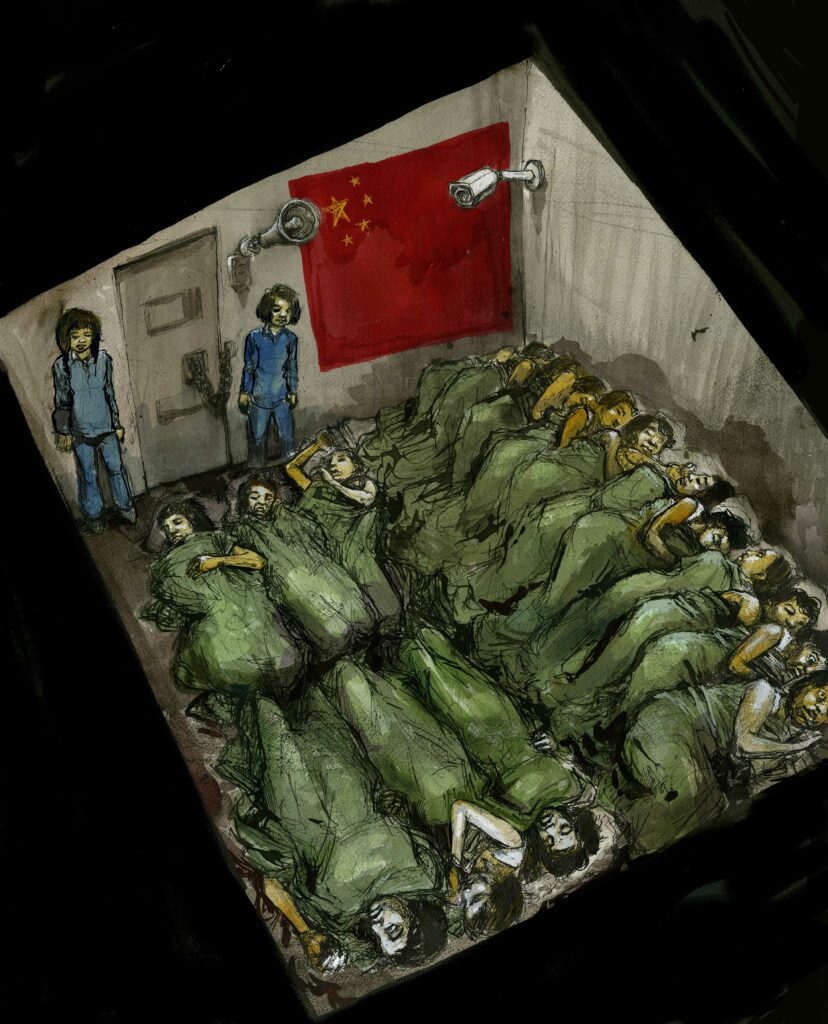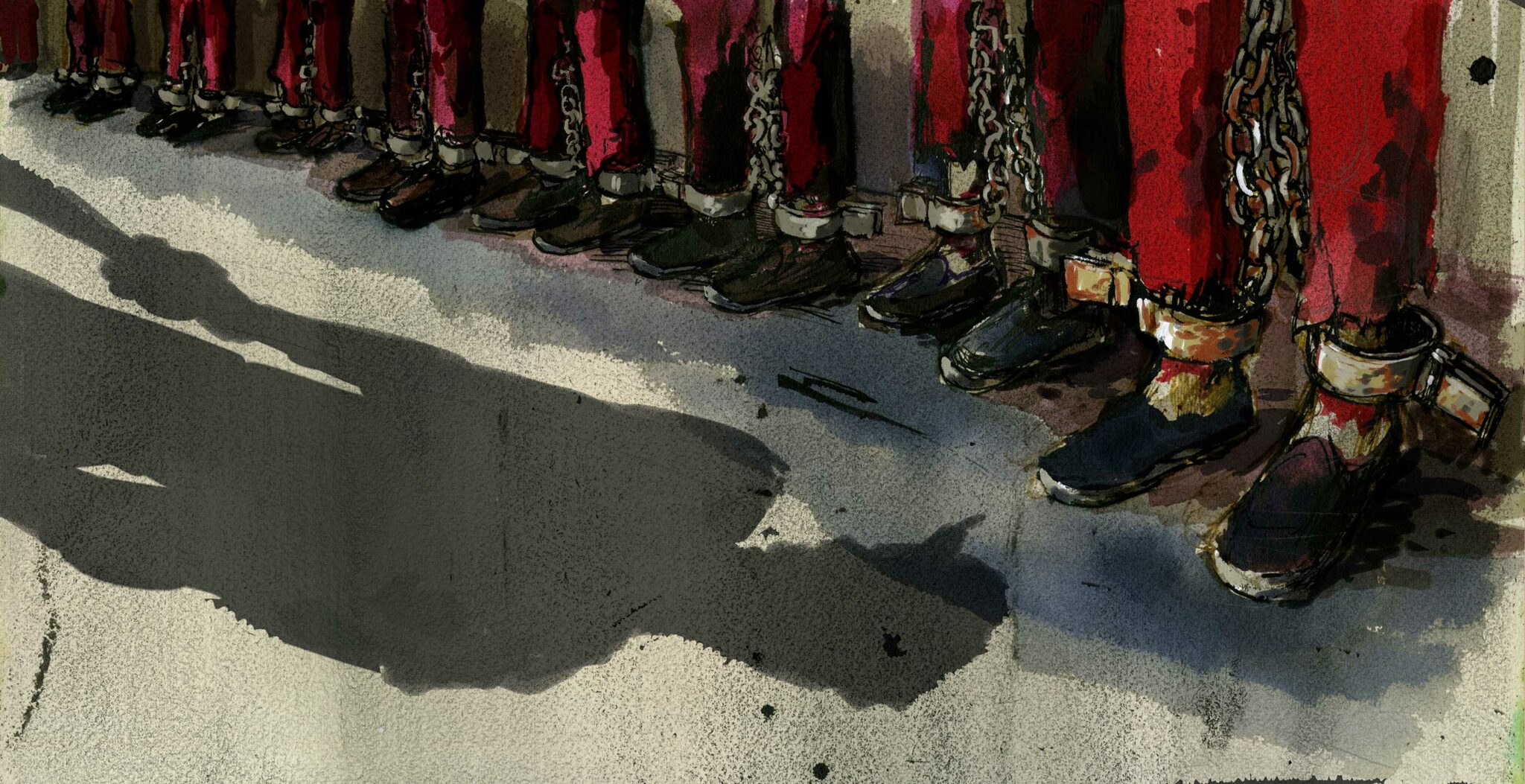Detention conditions
Amnesty International interviewed 55 people – 39 men and 16 woman – who were detained in internment camps in Xinjiang since 2017. These former detainees provided a broadly consistent description of life in the camps. The vast majority of them were detained for between nine and 18 months; many were detained in two or more camps.
Amnesty International used high-resolution satellite imagery to identify the facilities in which some former detainees reported being detained to corroborate their testimony. Baseline imagery from 2016 was used to compare changes from 2017 up to May 2021. Amnesty was able to accurately geolocate 22 camps where 17 former detainees were held. Amnesty was also able to likely locate seven other camps where ten former detainees were held. Satellite imagery at the locations described by former detainees from the time the detainees were held displayed new features, including internal fencing, external walls, guard towers, guard posts, people present in compounds, large numbers of cars and buses, and other new and temporary structures. (For more on satellite imagery of the internment camps see Chapter 6.)
From the moment they entered a camp, detainees’ lives were extraordinarily regimented under conditions that are an affront to human dignity. They were stripped of their personal autonomy, with every aspect of their lives dictated to them. Detainees who deviated from the conduct prescribed by camp authorities – even in the most seemingly innocuous ways – were reprimanded and regularly physically punished, often along with their cellmates.

Two female detainees stand “on duty” monitoring their cellmates while they sleep.
Detainees had no privacy. They were monitored at all times, including when they ate, slept, and used the toilet. They were forbidden to talk freely with other detainees. When detainees were permitted to speak – to other detainees, guards, or teachers – they were required to speak in Mandarin Chinese, a language many of them, especially older people and those from more rural areas in Xinjiang, did not speak or understand. [[[Amnesty International interviews.]]] Some detainees were physically punished if they spoke in a language other than Mandarin. [[[Amnesty International interviews.]]] The camps were set up so that it was impossible to practise religion, and former detainees said any sign of religious practice was punished. “We can’t even touch our face, or they would suspect us of praying,” Azizbek said. [[[Amnesty International interviews.]]]
Detainees were constantly evaluated. According to former detainees, as well as to the leaked government document known as the Telegram, detainees were given scores reflecting their “ideological transformation, study and training, and compliance with discipline.” Detainees’ behaviour affected their scores, which in turn factored into the treatment they received in the camp, including “rewards, punishments, and family visits”, as well as the timing of their released. [[[The Telegram (previously cited), para. 2.]]]
According to the Telegram, detainees were supposed to be able to communicate regularly with their families. [[[The Telegram (previously cited), para. 13.]]] Some former detainees were indeed able to call home weekly or monthly. [[[Amnesty International interviews.]]] A few were able to see family members in person a few times during their detention. [[[Amnesty International interviews.]]] Some detainees, though, were never able to call or see their families. [[[Amnesty International interviews.]]] All calls and interactions were monitored and recorded. [[[Amnesty International interviews.]]] Detainees were coached on what to say to their family members. [[[Amnesty International interviews.]]]
The former internment camp detainee testimony gathered by Amnesty corroborates many aspects of other accounts from former detainees reported by journalists and other organizations. [[[For other detainee accounts from internment camps See Alison Killing and Megha Rajagopalan, BuzzFeed News, What They Saw: Ex-Prisoners Detail The Horrors of China’s Detention Camps, 27 August 2020 →; The New Yorker, Inside Xinjiang’s Prison State: Survivors of China’s campaign of persecution reveal the scope of the devastation, 26 February 2021 →; Los Angeles Times, “Will they let us live?’ Inside Xinjiang, survivors of China’s internment camps speak, 17 December 2020 →; The Believer, Weather Reports: Voices from Xinjiang – Untold Stories from China’s Gulag State, 1 October 2019 →; Nathan Vanderklippe, Globe and Mail, “’I felt like a slave:’ Inside China’s complex system of incarceration and control of minorities: In Kazakhstan, former detainees recount brutal treatment, political indoctrination, forced labour and surveillance,” 31 March 2019 →, Xinjiang Victims Database, “Victim-Centered Primary Evidence for the Mass Incarcerations and Immense Rights Violations in the Xinjiang Uyghur Autonomous Region”, 9 May 2012 →; and for more accounts See Xinjiang documentation project, Lived Experiences: Primary Accounts →]]]



